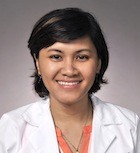Program Information
CBCT-Based On-Site Simulation, Planning, and Delivery (OSPD) for Whole Brain Radiotherapy
A Le*, K Choe , S Jiang , R Timmerman , H Choy , A Pompos , UT Southwestern Medical Center, Dallas, TX
Presentations
TU-AB-303-3 (Tuesday, July 14, 2015) 7:30 AM - 9:30 AM Room: 303
Purpose: To demonstrate the feasibility of a CBCT-based on-site simulation, planning, and delivery (OSPD) for whole brain radiotherapy, in which all steps from imaging, planning to treatment delivery are performed at the treatment unit in one appointment time slot. This work serves as the proof of concept for future OSPD single fraction radiation therapy.
Methods: An integrated on-site imaging, planning and delivery workflow was developed and tested for whole brain radiotherapy. An automated two-opposed-oblique-beam plan is created by utilizing the treatment planning system scripting and simple field-in-field IMRT. The IMRT plan is designed with maximum 8 control points to cover the target volume consisting of the brain to C1/C2 of the spinal cord, with dose homogeneity criteria from -5% to +7% of the prescription dose. Due to inaccuracy of reconstructed Hounsfield unit numbers in CBCT images, the dose distribution is calculated with non-heterogeneity correction introducing only clinically insignificant dose discrepancy. A coherent and synchronized workflow was designed for a team of attending physician, physicist, therapists, and dosimetrist to work closely with the ability to quickly modify, approve, and implement the treatment.
Results: Thirty-one patients have been treated with this OSPD treatment, without compromising the plan quality compared to our regular clinically used parallel apposed 2D plans. The average time for these procedures are 48.02 ±11.55 minutes from the time patient entered the treatment room until s/he exited, and 35.09 ±10.35 minutes from starting CBCT until last beam delivered. This time duration is comparable to the net time when individual tasks are summed up during our regular CT-based whole brain planning and delivery.
Conclusions: The OSPD whole brain treatment has been tested to be clinically feasible. The next step is to further improve the efficiency and to streamline the workflow. Other disease sites will be also tested with this new technology.
Contact Email:


